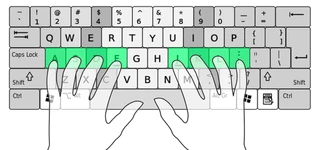How Automation in Blood Bank Management Enhances Safety & Efficiency?

Hope thrives in blood banks, but managing them is certainly no simple affair! Even small errors, such as a blood mismatch or misplaced unit, can escalate into some grave emergencies. Fatigue eats away at focus, especially during high-stress (or high-activity) moments. This turns manual tasks into a risky endeavor.
And automation emerges as the only perfect answer in moments like these. It guarantees the accuracy blood bank operations can’t afford to lose.
Technology transforms all that it comes in contact with. Human error disappears. Tracking becomes like shooting fish in a barrel. Blood safety is brought to the forefront. Barcodes, RFID tags, and automated storage shoulder the burden. Blood banks work like clockwork. Each patient gets the proper blood. Everybody departs with complete peace of mind.
This blog post explores the role of blood bank management software for automation in blood banks. We’ll break down how it cuts down on errors. You’ll learn about tracking inventory in real time and advanced storage solutions. We’ll also cover how software technology enhances safety. By the conclusion, you’ll see and understand why blood banks need automation like lifeblood.
What Makes Manual Blood Bank Management Risky?
Blood banks once used to depend solely on manual labor. Everything was done by humans, including keeping track of donations, managing inventories, and monitoring storage. The work used to be quite exhausting and prone to mistakes. Delays became commonplace. The following elements were the main causes of all the issues:
1. Human Error in Labeling and Tracking
Accuracy is critical when labelling blood bags. A single misstep can lead to switching blood types. That’s a danger no patient should face. Manual record-keeping only raises the odds of such mistakes.
2. Slow Processing and Reporting
Without automation in place, blood banks depend entirely on hand-logged entries. This turns simple tasks into time-consuming chores. Countless hours go into updating records, assembling reports, and organising donor information.
3. Inefficient Inventory Management
Mismanaged inventory can result in severe blood shortages and unnecessary waste. Hand-tracking expiration dates encourage mistakes. Blood units can quietly expire, sitting undetected on the shelves. Hospitals can find themselves desperate for essential blood types at the most crucial times.
4. Regulatory Compliance Issues
The rules for blood banks are rigid and unforgiving. Manually keeping records makes staying compliant a challenge. Missing even a single piece of data could result in hefty penalties, which could, in the worst scenario, shut operations down completely.
These common problems (given above) show why manual systems fall short. Automation is the way forward. Anyone refusing to adopt it will end up regretting their choice.
How Blood Bank Automation Improves Accuracy & Safety?

Automation streamlines blood bank operations, minimizing human error and ensuring safety. Here’s how:
1. Precision in Identification & Tracking
- Barcodes for Accuracy: Unique barcodes prevent mislabeling, ensuring every unit is accounted for.
- RFID for Real-Time Tracking: Instantly locate blood units, eliminating misplaced samples.
2. Automated Blood Compatibility Testing
- Ensures fast and accurate blood type matching for safe transfusions.
3. Efficient Donor Registration & Record-Keeping
- Digital systems speed up donor sign-ups and securely store records for easy access.
4. Smart Inventory Management
- Real-Time Updates: Staff always know available stock.
- Expiry Tracking: Alerts prevent the wastage of outdated blood.
- Auto Reordering: Notifications ensure timely restocking.
5. Secure & Optimized Blood Storage
- Temperature Control: Automated systems prevent spoilage.
- Tamper-proof labels & Access Control: Ensures security and prevents mishandling.
6. Compliance & Reporting Simplified
- Automated Data Entry & Reports: Eliminates manual errors and speeds up audits.
- Regulatory Compliance: Systems align with NABH & NBTC guidelines effortlessly.
Automation enhances blood bank efficiency, reduces errors, and ensures life-saving resources are always available.
How RAKT Blood Bank Software Enhances Automation?
Many blood banks rely on advanced software to automate processes. One such reliable system is RAKT Blood Bank Software. It improves efficiency and traceability by:

RAKT Blood Bank Software
Starting Price
₹ 96000.00 excl. GST
1) Reducing Paperwork & Manual Effort: RAKT automates record-keeping. Staff don’t waste time on paperwork. The software maintains donor and transfusion registers automatically.
2) Real-Time Monitoring & Inventory Management: Hospitals using RAKT can monitor blood supply levels in real-time. The system prevents shortages and reduces wastage.
3) Seamless Reporting & Compliance: RAKT generates reports instantly. It sends them via SMS and email. Blood banks stay compliant with ease.
RAKT simplifies management. It ensures smooth operations without human error.
The Role of Mobile Access in Blood Bank Management
Blood banks must be accessible from anywhere. Mobile-friendly automation makes this possible. Here’s what it does:
1. Staff Can Monitor Activities Remotely: Automated systems like RAKT allow mobile monitoring. Managers can oversee operations from their phones.
2. Instant Notifications for Critical Updates: If a blood type runs low, staff get alerts. Temperature changes? The system warns instantly.
3. Faster Response to Emergencies: Hospitals can check stock levels remotely. If a rare blood type is needed, they find it fast. Mobile access makes blood bank management more responsive and simple.
Conclusion
The face of blood banks has changed forever with automation. It boosts safety measures and cuts down human errors significantly.
Manual systems are now the relics of the past. They are no longer viable today. In fact, automation now deals with each unit (of blood) with unwavering care and watchfulness. Compliance becomes hassle-free, while storage monitoring flows without a hitch. Reports are crafted in the blink of an eye. Patients can breathe easy knowing their blood will arrive right when it’s needed!
Moreover, RAKT Blood Bank Software demonstrates what the latest technology can do to revolutionize healthcare. It increases efficiency and lowers the possibility of errors by automating repetitive processes.
Staff members can freely devote more time to higher-level care while guaranteeing that patients receive the prompt attention they require. It’s all in all quite evident that automation is the key to the future of blood banking.
The Techjockey content team is a passionate group of writers and editors dedicated to helping businesses make informed software buying decisions. We have a deep understanding of the Indian software market and the challenges that businesses face when choosing the right software for their needs. We are committed... Read more

















